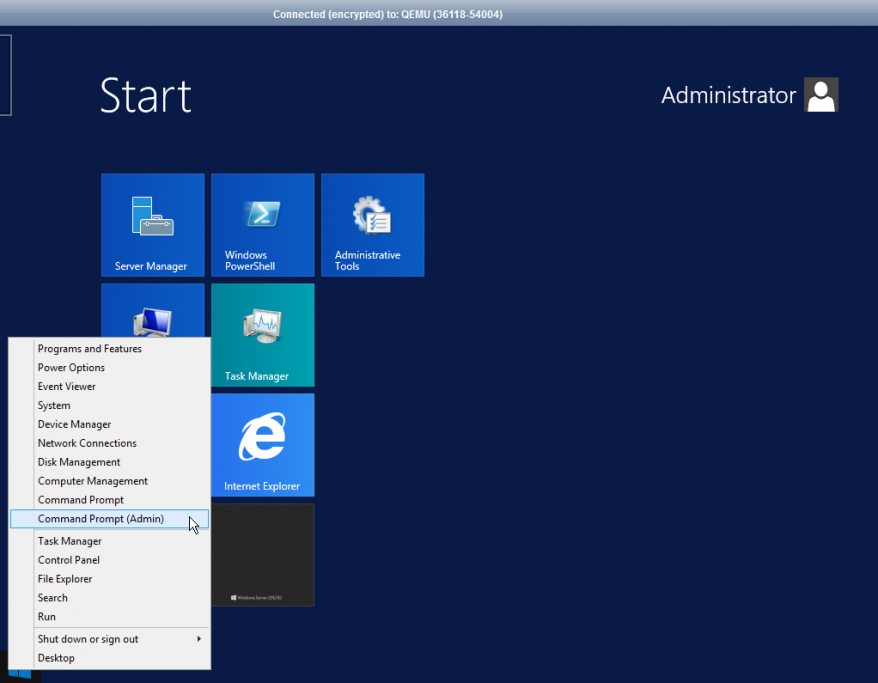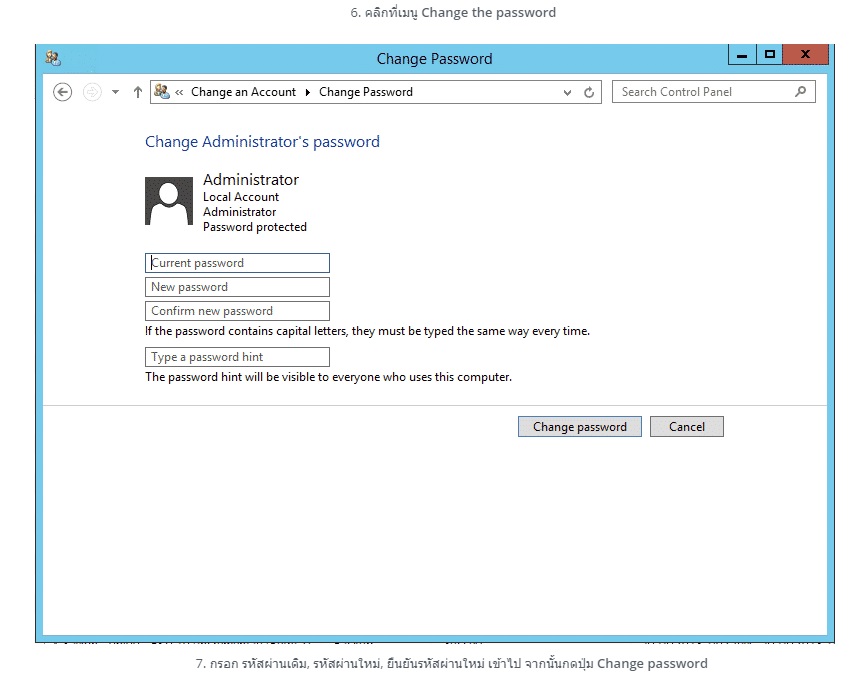

- #Change password windows server 2012 remote desktop install
- #Change password windows server 2012 remote desktop full
This will allow access to the RD Connection Broker servers through the gateway for clients that are connecting by using the DNS RR name. If you have an RD Gateway server in the deployment, ensure that you create a Remote Desktop resource authorization policy (RD RAP) with an RD Gateway-managed group that includes the DNS RR name of the RD Connection Broker server. For more information about installing the SQL Client, seeĪssign static IP addresses to all the RD Connection Broker servers that will be a part of the Active/Active Broker deployment, and create a DNS Round Robin entry with these IP addresses.
#Change password windows server 2012 remote desktop install
Install SQL Client on all the RD Connection Broker servers so that they can communicate with the SQL Server. This folder can be local on the SQL Server computer or a UNC path of a network location. Pre-create a folder to store the SQL database files. You can create the exception for “sqlservr.exe."
#Change password windows server 2012 remote desktop full
To do so you can create a security group, add all the RD Connection Broker servers to it, and give this group full permission to the SQL Server by using SQL Server Management Studio’s “Security” configuration.Ĭonfigure the Windows Firewall on the SQL Server computer to “Allow SQL Server Access” as described in

The RD Connection Broker servers must have full permissions on the SQL Server.

For more information about the sizing guidance of SQL Server 2012, see Must be used, and the minimum recommended SQL Server SKU for this is You must have a SQL Server setup that can be used by the RD Connection Broker servers to store data. The following prerequisite steps are required before enabling this feature: After there is a single RD Connection Broker server deployment, it can be configured for Active/Active Broker setup, and then other RD Connection Broker servers can be added to this setup. The starting point for enabling this feature is to have a single RD Connection Broker server deployment for eitherĭeployment. The end nodes (RD Virtualization Host, RD Session Host, and RD Web Access) are configured with the full list of all the fully qualified domain names (FQDNs) of the RD Connection Broker servers, and they can connect to any of the RD Connection Broker servers in the setup. The RD Connection Broker servers are using a SQL database for storing data, and RDP clients are connecting to the RD Connection Broker servers using DNS Round Robin. The following diagram shows an Active/Active Broker deployment with one RD Virtualization Host server and one RD Session Host server. This prevents the RD Connection Broker server from being a single point of failure and also allows “scale out” as load demands. The Active/Active Broker feature in Windows Server 2012 eliminates the need for clustering and provides a fully active/active model with this model two RD Connection Broker servers can be combined under a single DNS entry to provide both fault tolerance and load balancing. This provided high availability in the case of component failure, but it did not address high scale requirements. In previous releases, the RD Connection Broker role service has supported an active/passive clustering model. This post is intended for administrators who are deploying virtual machine-based or session-based desktop deployments with RD Connection Broker and who want to have high availability and scalability in their deployment. This post provides an in-depth look into one of those features, the new high availability feature of RD Connection Broker known as the Active/Active Broker, and includes deployment steps and performance results. There have been a couple of posts recently about the new Remote Desktop Services features in Windows Server 2012. Hello, this is Jingyuan, Munindra, and Sriram from the Remote Desktop Virtualization team. First published on CloudBlogs on Jun, 27 2012


 0 kommentar(er)
0 kommentar(er)
